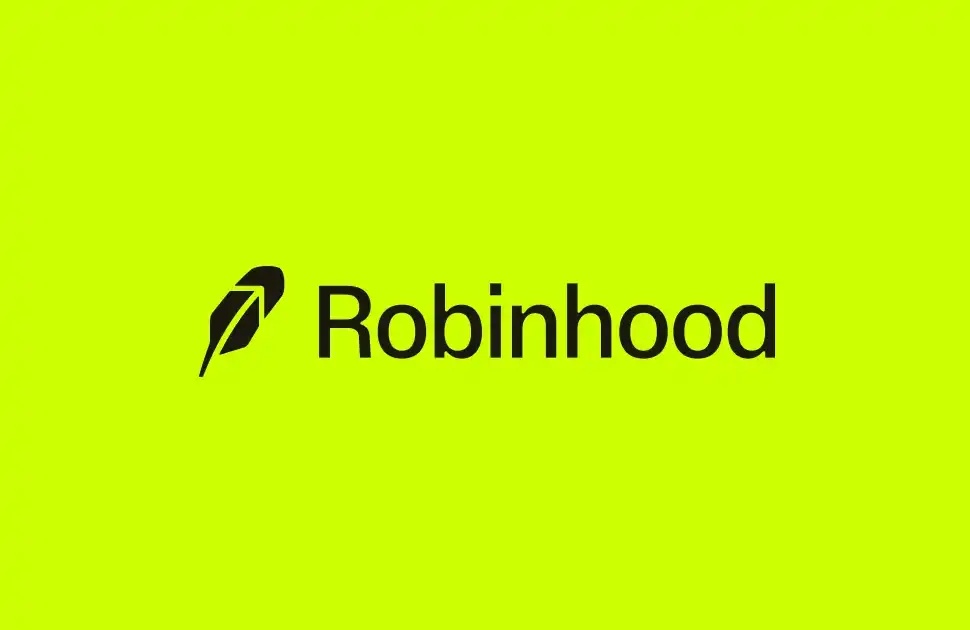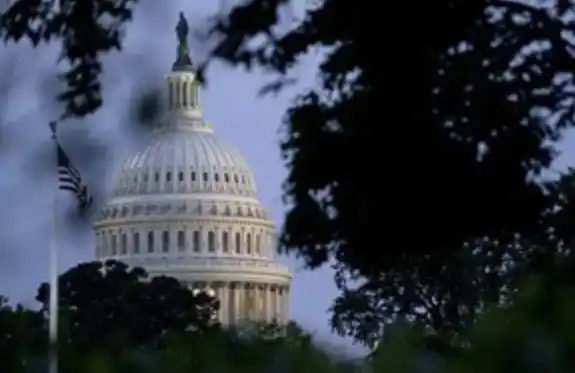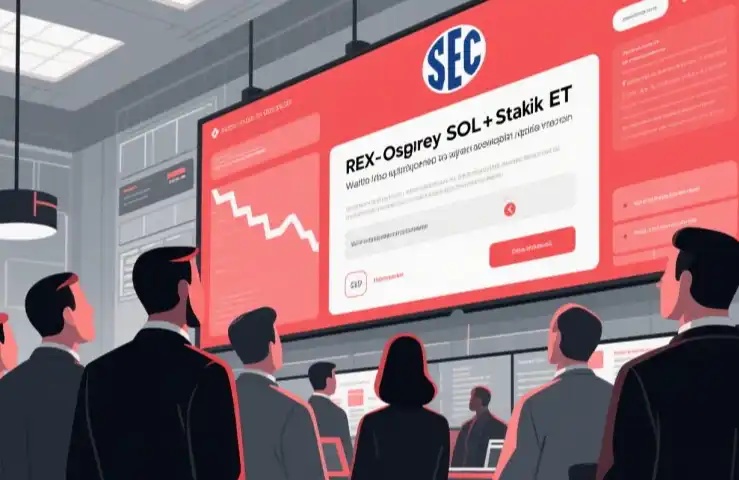Conversation with Tether's CEO: I Don’t Envy Circle Going Public, I’m Investing in Dairy, Buying Land, and Working on AI
Original Source: CNBC
Original Translation: MD, Mingliang Company
During the global Bitcoin conference at the end of May, Paolo Ardoino, the CEO of Tether, the issuer of the world's largest stablecoin USDT, gave an interview to CNBC.
In his speech at the Bitcoin conference, Paolo Ardoino stated, "USDT has approximately 420 million users in emerging markets and developing countries, accounting for 62% of decentralized trading volume. More notably, about 35% of USDT users use it as a savings account—because they live in countries like Turkey, Argentina, and Vietnam, where local currencies are heavily devalued, leaving them with no choice but to save in US dollars. USDT becomes their most practical alternative."
According to Coingecko's data from June 18, the overall market capitalization of USDT is approximately USD 155 billion, with a 24-hour trading volume of about USD 27.7 billion, making it the largest stablecoin issuer globally. On the other hand, the newly publicly listed "first stablecoin stock," Circle (CRCL.US), which issues USDC, has a total market capitalization of around USD 61.5 billion and a 24-hour trading volume of approximately USD 9.2 billion.
However, market analysis suggests that under the framework of the "Stablecoin TREAT Act" (namely the "Trust and Resiliency for Economic Access Today Act of 2023," which was passed by the United States Senate on June 17 and is now awaiting review by the House of Representatives), Tether's compliance level is considered lower compared to Circle's. This is cited as one reason why Circle went public ahead of Tether. In the interview, Paolo Ardoino also addressed questions related to "offshore structures" and audits, noting that they have had productive communications with the Big Four accounting firms. However, he also acknowledged, "This will be a long journey."
It is worth mentioning that Paolo Ardoino specifically shared Tether's rationale behind investing in agriculture, dairy, video platforms, and brain-machine interface tech companies.
According to Tether's official website, the company announced on April 30 this year that it has acquired Latin American agricultural firm Adecoagro. The firm's core business encompasses sugar, ethanol, dairy, and crop production in Argentina, Brazil, and Uruguay, holding 210,400 hectares of farmland and various industrial facilities in these countries.
Regarding this, Paolo Ardoino stated in an interview, "We are still exploring how to show agricultural businesses and commodity producers (e.g., wheat, rice, milk, etc.) how to use stablecoins for international trade. For instance, Adecoagro ships products to Asia and the US. To make these sales more efficient, they are starting to consider using stablecoins to complete transactions."
Tether's latest disclosed investment was its June 12 announcement of acquiring a 31.9% stake in Canadian gold royalty company Elemental Altus Royalties. Tether stated that this investment reflects its commitment to "integrating long-term stable assets like gold and Bitcoin into its ecosystem," as both a hedging strategy and part of its promise to build resilient digital economic infrastructure.
Below is the full (abridged) interview compiled by "Bright Company":
Host: Tether is one of the most profitable companies per employee in the world. Before we dive into your stablecoin strategies and some of your initiatives, I am intrigued by some of Tether's recent investments, such as your investment in a Brazilian dairy company. Can you talk about your investments in AI and neuroscience, as well as why you're bullish on dairy and milk in the long term?
Paolo: First of all, thank you for having me. From the outside, people might think we're doing random things, but that's not the case.
Host: When you have substantial capital, you need to invest wisely, which is why I’m so curious about what you’re doing.
Paolo: Over the past two and a half years, we have generated $2 billion in profit. You have to think carefully and create very precise investment plans. We receive almost a hundred investment proposals every day, so we need to be very selective. A portion of our investments—by the way, let me clarify, these are investments outside of stablecoin reserves—are focused on long-term, safe investments, such as land and agriculture. Tether is known for creating and managing the world's largest stablecoin, USDT, which is a tool that brings stability to individuals, communities, and nations. We provide stability in countries where local currencies are highly vulnerable, such as the Argentine peso or the Turkish lira. Stability is at our core, and when it comes to long-term stability for humanity, nothing is more stable and essential than land and agriculture.
The reason we are investing in Adecoagro—a publicly listed company and the largest single landowner in Argentina, Uruguay, and Brazil—is because we want our portfolio to gain exposure to the “real Bitcoin” — land. Land is scarce, and you cannot create more of it. Of course, you could argue about creating more land on Mars, but the reality is that humanity will always need land, agriculture, and quality farming for survival and prosperity. That’s why we allocate a portion of our portfolio to the land business. Additionally, we are exploring how to demonstrate the use of stablecoins for international trade to agricultural businesses and commodity producers (e.g., wheat, rice, milk). For instance, Adecoagro sells products to Asia and the U.S., and to make these sales more efficient, they are beginning to consider the use of stablecoins for transactions. This is an incredibly compelling approach, as we believe commodity trading companies will become the largest drivers of stablecoin adoption over the next five years.
Of course, we are also making investments in newer types of technologies, such as artificial intelligence and biotechnology. I personally love these fields because, at heart, I’m a geek. That’s why we invested in Northern Data. We are a major shareholder of Northern Data, which is likely the world’s largest independent AI infrastructure provider. By “independent,” I mean it’s not Google, not Microsoft, not Amazon. They own 24,000 GPUs, and we plan to leverage these resources at Tether to develop our own AI models in the future. We are building our own AI platform within Tether. We’ve also invested in biotech and neurotechnology, particularly in a company I truly admire, Blackrock Neurotech. You could call it a competitor to Neuralink, though in reality, Neuralink might be considered their competitor. We are creating one of the world’s most advanced brain-computer interfaces, capable of reading up to 90 words per minute from the human brain. If you think about word speed, this is nearly as fast as a person can talk. I believe this will be one of the most critical technologies for humanity in the future because as AI and robotics become so advanced, I strongly believe humans will need a mathematical co-processor in their brains to stay relevant and compete with AI and robots. We’ve also invested in other companies, like Rumble, which is an excellent and highly competitive video platform that rivals YouTube. It’s growing quickly and now boasts 60-70 million users.
Host: Your investment portfolio is incredibly strong. However, your core business controls over 60% of the stablecoin market. We've seen some progress with the "Genius Act" on Capitol Hill, though it has faced pushback from Senate Democrats. David Sacks from the White House mentioned that he remains highly optimistic about the bill passing (it was approved by the Senate on June 17). My question is, once there’s regulatory clarity, what will the competitive landscape look like, assuming a flood of new stablecoins enters the market? We've seen similar moves in recent years, like PayPal launching its own stablecoin, but its market cap remains below $1 billion. It’s been tough for many to compete with Tether. USDC is currently in second place but still has a noticeable gap relative to you. What’s your view on how the competitive landscape could shift post-regulation?
Paolo: I love competition. But I think the competition will mostly center around Circle, our second-largest competitor, rather than us. Here’s why: all the companies announcing stablecoin initiatives come from the traditional financial system. The success of USDT lies in our understanding that 3 billion people in this world are unbanked. These people aren’t bad—they are incredibly decent individuals, but they are neglected by banks due to poverty. For a bank to find you interesting, you would have to generate at least $150 annually in fees and commissions. But if you live in a country where the average daily wage is $1.34 or in Africa where the monthly salary is $80, it's simply impossible to accumulate $150 annually for the bank. So, all the stablecoins created by traditional financial institutions will cater to their existing customers. Meanwhile, we serve those 3 billion people—3 billion people who are labeled by the banking system as a ‘niche market.’ Many competitors claim that Tether serves this so-called ‘niche market,’ but half the world’s population should not be called a ‘niche.’ Our success is built through grassroots efforts. We’ve established numerous service kiosks across Africa, and by 2030, we aim to have 100,000 service kiosks there, providing power through solar panels to people in small African villages. Moreover, we’ve already established hundreds of thousands of touchpoints across Latin America, delivering stablecoin and Bitcoin education.
Host: I’ve always been curious, since Tether places significant emphasis on offline payments, where users can pay with stablecoins from their crypto wallet via their phones. But much of the world still operates on a cash economy. Stablecoins are indeed crucial for unbanked services, remittances, and safe store-of-value opportunities, especially in high-inflation economies. However, do people really want to use crypto for payments in physical stores?
Paolo: More and more willing. We now have approximately 420 million users, adding 30 million new wallets each quarter, almost like Facebook back in the day. This proves that money is the best social network. In fact, even in the poorest countries, an increasing number of people can afford inexpensive smartphones that are still capable of running a wallet. Through word-of-mouth, our user base is growing rapidly. All our competitors are focusing on institutional clients, while we’ve established millions of real-world touchpoints. We start from the streets, not from the ivory tower.
Host: Speaking of which, I met an amazing developer in South Africa, Kgothatso Ngako, who integrated Lightning into mobile payments. People there don’t even need an internet connection to send Bitcoin—they can do it via SMS. Is this kind of technology similar to what you are working on, enabling people to operate without data terminals?
Paolo: We support many such terminals, capable of accepting Bitcoin Lightning payments and USDT stablecoin payments. This is one of the exploration directions we’re actively pursuing. Additionally, setting up service kiosks in Africa allows us to engage directly with individuals in villages who receive remittances (e.g., from Europe or the U.S.) and teach them how to store funds with a smartphone. These individuals then pass on the knowledge to their entire community. We rely on word-of-mouth growth and focus on physically validating our technology in the smallest and most remote villages in Africa. If it works there, it will work anywhere.
Host: You seem to welcome competition and aren't concerned about new players entering the market. I recall a report in *The Wall Street Journal* mentioning that major Wall Street banks, like JP Morgan and Citibank, are considering launching a unified digital dollar. They might compete for market share against Circle, particularly because Tether focuses on emerging markets.
Paolo: We work hard on the ground every day, with a full team dedicated to education and collaboration with local partners. JP Morgan would never go to a small village in Africa to teach people how to use their stablecoin. That's our everyday reality. JP Morgan and similar companies will only sell stablecoins to wealthy individuals who are already financially well-off. This is why I believe that stablecoins in the U.S. serve as "icing on the cake" rather than a necessity. In the U.S., you already have dozens of payment methods, highly competitive options, and the best payment networks. The U.S. dollar itself is the ultimate payment rail. But outside of the U.S., things are far less optimized. People are eager to hold dollars, yet cash dollars are becoming increasingly hard to obtain. So, the best way for people to hold dollars is through USDT. But no one else is paying attention to this market—only us.
Host: Considering the scale Tether has reached today, have you ever thought about leaving the Cayman Islands?
Paolo: Actually, we’ve already moved from the BVI (British Virgin Islands) to El Salvador, where our company is now registered. El Salvador is currently the only country with comprehensive and intelligent stablecoin regulations. The European stablecoin regulation (MiCA) is terrible. They require stablecoin issuers to hold 60% of reserves in uninsured cash deposits. Look at what happened to one of our main competitors in 2023 at Silicon Valley Bank. They had $3 billion in uninsured cash deposits at Silicon Valley Bank. The bank went under, and they were on the verge of failure until the FDIC bailed the bank out. So, the stablecoin was saved. But you should hold Treasury bills, not uninsured cash. The MiCA license mandates holding uninsured cash, so we decided not to apply for it because it’s a bad license. El Salvador now has the most advanced and secure regulatory framework. The U.S. will soon catch up and establish good regulations as well. Until then, we must play the hand we’re dealt.
Host: I recently spoke with Bo Hines, head of the Presidential Council of Advisers for Digital Assets. He mentioned that Tether is the seventh-largest buyer of U.S. Treasuries and one of the largest holders in history. Once the Genius Act or other stablecoin legislation passes, demand for U.S. Treasuries could surge overnight.
……
What concerns, if any, do you have regarding the Genius Act? Do you support other legislation currently being proposed?
Paolo: I think the Genius Act is reasonable and comprehensive. Creating appropriate rules for stablecoins is crucial because stablecoins are the most powerful application of blockchain technology.
Host: Tether currently publishes regular attestations regarding your reserves. Will you be providing more transparency around your books in the future, especially given the past controversies and settlements?
Paolo: To clarify, no stablecoin issuer—or rather, no significant stablecoin issuer—has ever undergone a full audit of their reserves. All stablecoin issuers, including our largest competitor, have only conducted attestations. The media has often singled us out, but this isn’t a Tether-specific issue. None of the major stablecoin issuers have carried out full audits; they only have attestations. Let me explain: In 2022, Senator Warren sent an open letter to all audit firms warning them to stay away from cryptocurrency. At the time, the OCC (Office of the Comptroller of the Currency) was also trying to suppress cryptocurrency. The situation has since changed, but back then, the Big Four audit firms were unwilling to sit down and work with stablecoin companies—not just us, but any of them. Now, with the government’s changing stance, it’s starting to embrace cryptocurrency.
In the past month and a half, we’ve initiated very positive dialogues with some of the Big Four firms. This will be a long process, but it’s already off to a good start, at least in terms of starting the conversation. We’re having open discussions with them. I’m very confident that we’ll achieve a full audit. I love transparency, and I’m the biggest proponent of it within the company. If you look at our self-attestation, it’s more detailed than our competitors’. We disclose all the different classes of investments, including how much gold, Bitcoin, other assets, or treasury bills we hold. Last year, we underwent over two years of due diligence. A U.S.-based institution spent two years conducting the largest due diligence on our reserves globally, leaving no stone unturned. In early 2024, the results of this due diligence will be made public, confirming the legitimacy of our reserves. They conducted examinations in both January and May. Additionally, I disclosed all our processes and reserves for two years to the New York Attorney General as part of a settlement. We are among the most scrutinized companies worldwide. I know that our company is very transparent and is setting an example for the entire industry, while also working to correct many misconceptions people have about us.
Welcome to join the official BlockBeats community:
Telegram Subscription Group: https://t.me/theblockbeats
Telegram Discussion Group: https://t.me/BlockBeats_App
Official Twitter Account: https://twitter.com/BlockBeatsAsia
 Forum
Forum OPRR
OPRR Finance
Finance
 Specials
Specials
 On-chain Eco
On-chain Eco
 Entry
Entry
 Podcasts
Podcasts
 Activities
Activities








